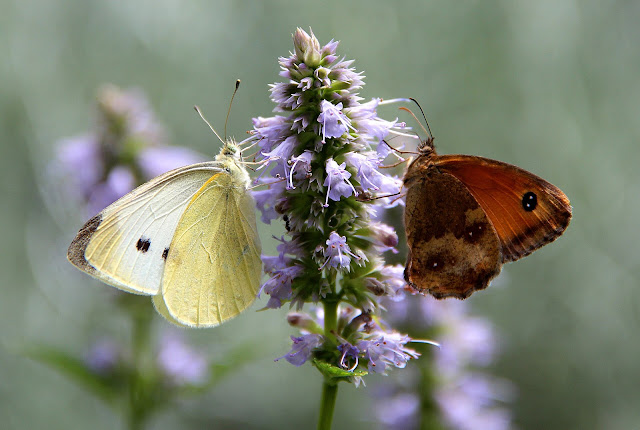Giant Blue Hyssop or Agastache foeniculum (Pursh) Kuntze is in the Mint or Lamiaceae Martinove family. Although it is not native to New England it can be found in parts of Connecticut, Rhode Island, and New Hampshire. It is native to most of Minnesota and other mid-West states.
About Blue Giant Hyssop
The Blue Giant Hyssop can be found growing in sandy to loamy soils in full or partial sun on erect stems that grow up to four feet high. The heavily veined leaves are somewhat triangular in shape and have sharp teeth and have an anise scent when crushed. The flowers grow in clusters on a spike up to eight inches high in a whorl-like pattern that is commonly seen in the mint family. The spikes are commonly packed with flowers. Large plants can create many spikes with whorls of flowers. The tube-shaped flowers have sharply pointed teeth and range in color from blue to violet. The flowers grow in clusters from ovate light green bracts on the spike. Fertile flowers produce one brown seed that is dispersed by the wind. Seeds that fall to the ground will self-germinate in the spring.
 |
| photo credit: Jean Pol Grandmont |
The most common use of the Blue Giant Hyssop was to treat coughs, colds, and fevers. A tea or infusion was made from the root or the leaves to relieve congestion by acting as an expectorant. An infusion of the leaves was also traditionally used to treat chest pains and a weak heart. A cold infusion of the leaves was taken for chest pains caused by coughing. Specifically, the Cheyenne put the leaves in a hot steam bath to induce sweating, they also made a powder from the leaves and rubbed it on the body to treat high fevers. The Chippewa made a simple poultice of the leaves and stalk and applied the mixture to burns, they also used the plant as a charm for protection. The Cree often included the flowers of this plant in medicine bundles and used an infusion of the stem to treat those coughing up blood. The Iroquois made a compound infusion which they used as a wash to relieve the poison ivy rash.
The Dakota, Winnebago, Omaha, Lakota, Paeness, and Ponca used the leaves to make tea that they drank with meals. Some communities also used the leaves as a sweetener when cooking.
 |
| Photo: Cephas |
Common names of this plant include Lavendar Giant Hyssop, Fragrant Giant Hyssop, Anise Hyssop, and Wild Anise.
The genus name, Agastache is derived from the Greek words - agan meaning very much, and stachys meaning an ear of wheat.
The species foeniculum is from Latin and is the word for fennel.
The name Pursh refers to a botanist who wrote A Systematic Arrangement and Description of Plants of North America.
Many species of bees are attracted to these flowers. American Goldfinches eat the seeds.

No comments:
Post a Comment